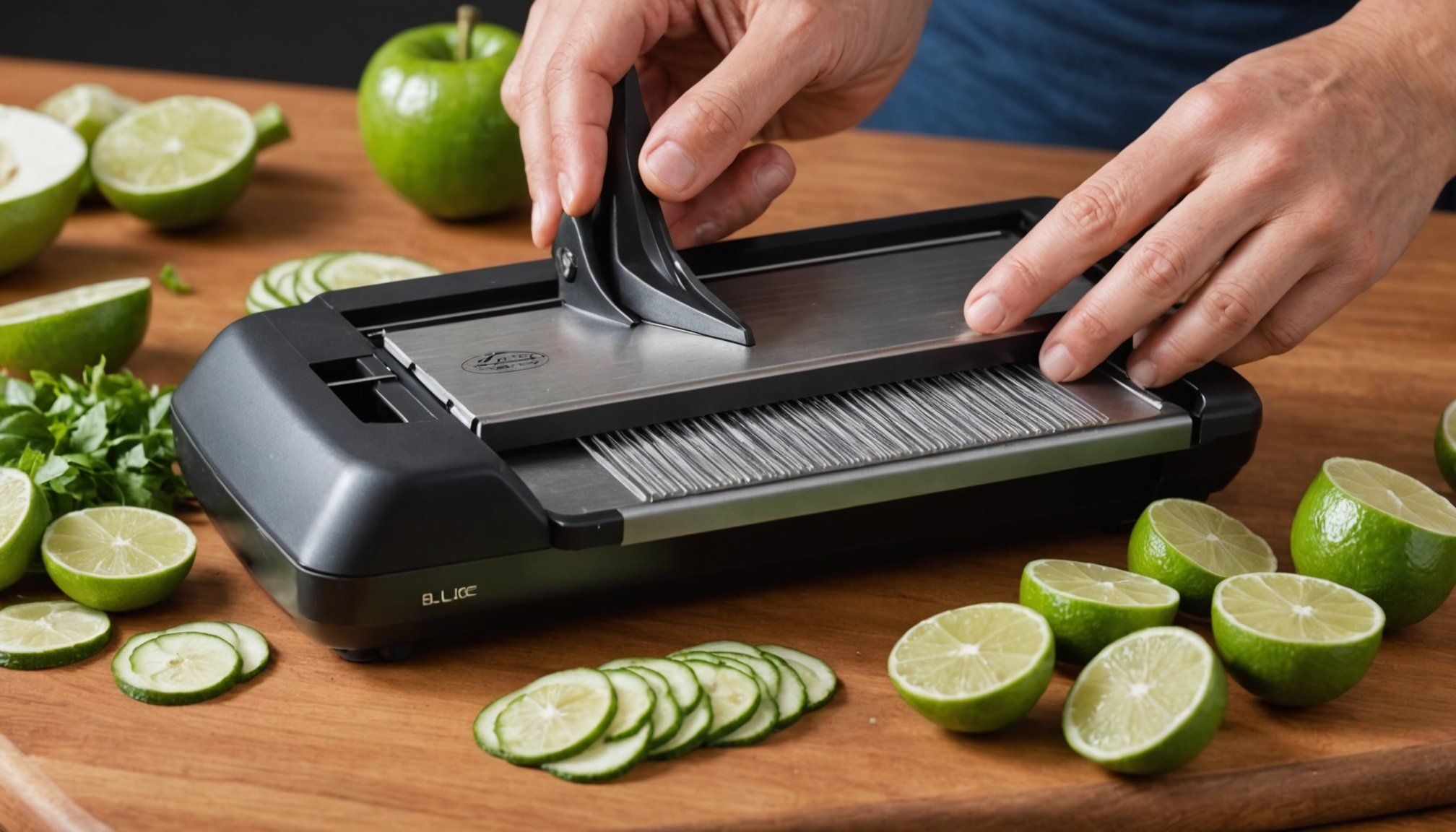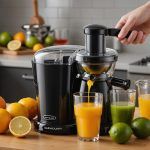Importance of Blade Material in Mandoline Slicers
Understanding the blade material in mandoline slicers is crucial for achieving superior slicing precision and efficiency in the kitchen. The type of material used in the blades significantly affects their performance and durability.
Comparison of Blade Materials
-
Stainless Steel: Known for its exceptional sharpness, stainless steel blades provide consistent slicing with precision. Their durability ensures they remain effective over time with proper maintenance. These blades are particularly effective with firmer foods like carrots or potatoes.
Also read : How to Choose a Range Hood that is Both Powerful and Quiet?
-
Ceramic: Ceramic blades are prized for their slicing precision due to their lightweight nature. They maintain sharpness longer than stainless steel but can be more brittle. Ceramic is best suited for softer foods like tomatoes or cucumber, maintaining clean cuts without smashing or tearing.
-
Specialty Materials: Some mandoline slicers feature blades crafted from titanium or other compounds. These emerging materials might offer anti-rust properties and additional strength. However, the choice often depends on specific kitchen needs and the types of foods being prepared.
Also to discover : How to Select the Best Meat Grinder for Home-made Sausages?
When selecting a mandoline slicer, consider the types of foods you most frequently slice, and match them with the blade material best suited to handle those tasks for optimal results.
Tips for Achieving Optimal Cuts with Mandoline Slicers
Using mandoline slicers effectively can significantly enhance your kitchen experience by delivering uniform cuts with precision. To achieve optimal results, it is essential to focus on a few key slicing tips.
First, ensure your food is prepped adequately. Cutting larger pieces into manageable sizes will improve the slicer’s performance and safety. Maintaining a consistent pressure while slicing prevents uneven cuts, ensuring each piece is uniform. Practising this technique can help you build confidence and precision.
Choose the blade material ideal for your food type. For firmer vegetables like carrots, stainless steel blades work well due to their sharpness and durability. For delicate items like tomatoes, ceramic blades provide a clean slice without crushing. Finally, consider your slicer’s settings, adjusting them according to the food’s thickness and texture.
To master the mandoline slicer, practice with various foods. This offers a chance to experiment with different blades, honing your ability to achieve perfect slices each time. Remember, understanding your mandoline slicer and practicing these tips enables you to utilize its full potential, transforming your slicing tasks into a seamless experience.
Recommendations for High-Quality Mandoline Slicers
Selecting the best mandoline slicer involves considering user reviews, purchase guide insights, and personal slicing needs. Understanding these elements ensures a satisfying and efficient kitchen tool purchase.
Top Picks for Stainless Steel Mandoline Slicers
Choosing among stainless steel models requires attention to features like blade sharpness and adjustability. Users often commend slicers with ergonomic handles and safety features. High-rated models typically offer a balance of durability and efficiency. Prices vary, with budget-friendly options starting at around £30, escalating for premium models with enhanced features.
Best Ceramic Mandoline Slicers
Ceramic mandolines appeal for their precise and delicate slicing capabilities. Key features include lightweight design and longevity. Consumers frequently emphasise the importance of sharpness retention in reviews, noting it as a deciding factor. While premium ceramic mandolines are pricier, budget models exist, allowing users to experience ceramic benefits without substantial investment.
Where to Buy Mandoline Slicers
When purchasing, consider reputable online retailers for competitive pricing and flexible return policies. Local kitchen supply stores offer hands-on purchasing experiences and immediate customer support. Don’t overlook warranty and after-sales services, as these can enhance overall satisfaction and ensure a dependable slicing experience.
Importance of Blade Material in Mandoline Slicers
Understanding the significance of blade material in mandoline slicers is vital for optimal slicing performance. Each type of blade material offers distinct advantages that impact both the slicing precision and the overall cooking experience. The choice of blade is crucial when considering your most commonly sliced foods, ultimately enhancing kitchen efficiency.
Comparison of Blade Materials for Mandoline Slicers
Different materials impact the slicer’s efficiency. Stainless steel blades are renowned for their sharpness and long-lasting durability, making them ideal for firmer foods like potatoes. They require routine maintenance to maintain their superior edge. On the other hand, ceramic blades excel in slicing precision and offer a feather-light feel. These are perfect for softer foods such as tomatoes, ensuring cuts without crushing. However, ceramic blades demand extra care as they can be fragile if mishandled.
Specialty Materials
Emerging options like titanium and composite materials are gaining attention. Such materials promise extra strength and potentially anti-rust properties. Selecting the right blade material should reflect your culinary needs and the texture of foods you prepare most frequently.








